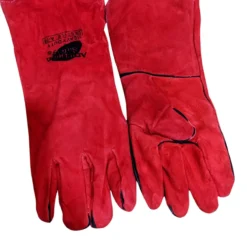Express Deliveries country wide.
Anti cut gloves

This Anti-cut gloves, also known as cut-resistant gloves, are specialized gloves designed to provide protection against cuts, slashes, and lacerations in various work environments. They are commonly used in industries such as construction, manufacturing, automotive, glass handling, metalworking, and food processing.
Quantity:
Continue Shopping
Category: Gloves
Description
Anti-cut gloves, also known as cut-resistant gloves, are specialized gloves designed to provide protection against cuts, slashes, and lacerations in various work environments. They are commonly used in industries such as construction, manufacturing, automotive, glass handling, metalworking, and food processing. Here are some key features and considerations of anti-cut gloves:
Cut-Resistant Materials: Anti-cut gloves are made from materials specifically engineered to provide high resistance against cuts and sharp objects. These materials often include high-performance fibers such as Kevlar®, Dyneema®, Spectra®, or blended yarns with stainless steel or fiberglass for added strength.
Cut Resistance Levels: Anti-cut gloves are typically rated based on their level of cut resistance, which is determined by standardized testing methods. The most commonly used standard is the ANSI/ISEA 105, which assigns gloves a cut resistance level from A1 to A9, with A9 providing the highest level of cut protection.
Comfort and Dexterity: While offering cut resistance, anti-cut gloves strive to maintain comfort and dexterity for the wearer. They are designed to provide a balance between protection and flexibility, allowing for precise movements and maintaining grip sensitivity.
Seamless Construction: Many anti-cut gloves feature seamless construction to minimize discomfort, irritation, and potential weak points. Seamless gloves provide a smooth and comfortable fit, reducing the risk of chafing or rubbing during extended wear.
Coatings and Finishes: Anti-cut gloves may have additional coatings or finishes to enhance their grip, abrasion resistance, or protection against oils, liquids, or chemicals. Common coatings include polyurethane (PU), nitrile, latex, or PVC, each offering specific advantages depending on the intended application.
Finger Dexterity and Touchscreen Compatibility: Some anti-cut gloves are designed with enhanced finger dexterity, allowing for better manipulation of small objects or tools. Additionally, certain gloves may have touchscreen compatibility, allowing users to operate smartphones or touchscreen devices without removing the gloves.
Applications: Anti-cut gloves are suitable for a wide range of applications where there is a risk of cuts or lacerations. They are commonly used in tasks such as handling sharp objects, working with glass or metals, using cutting tools, operating machinery, and handling sharp-edged materials.
It is important to note that anti-cut gloves provide varying levels of protection depending on the specific cut resistance rating and the materials used. It is crucial to assess the specific hazards and risks of your work environment and select gloves with an appropriate level of cut resistance to ensure effective protection.



